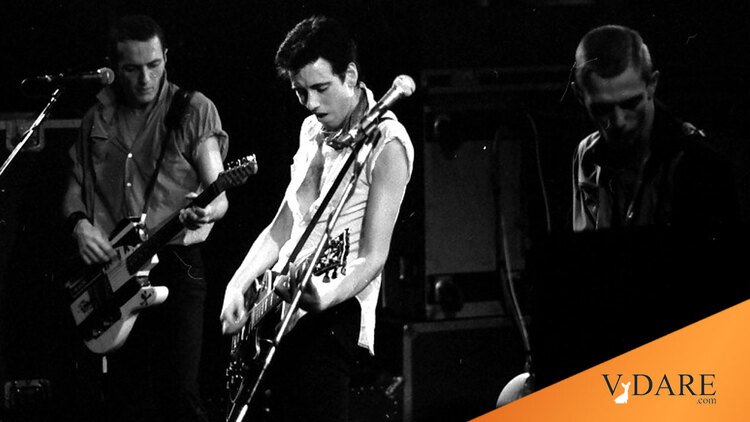
Drugs And Koka Kola: Amphetamines In British Rock
By Steve Sailer
04/29/2023
I was killing time on another blog and commented:
Second best band I saw a lot in 1977-1983 was the English Beat. I have no idea why they didn’t catch on in America.
OK, maybe I do have an idea… Perhaps it was because they were a great dance band, and most white kids in America weren’t really into dancing.
Moreover, English white kids took a lot of amphetamines to go dancing. So the English Beat’s usual beats-per-minute was simply too fast for Americans.
The British military handed them out like crazy during WWII, as did the American military, but the next generation of American kids mostly stopped taking them, while a couple of generations of English working-class kids afterwards used speed to dance all night.
There is a huge amount of popular culture, both creative and critical, about the influence of LSD during the few years it was in fashion, from about 1965-1969.
And cocaine’s peak from, say, 1975-1985, is widely seen as LSD’s dark doppelgänger. As an expensive drug, cocaine always had glamor, being associated with Sigmund Freud and Cole Porter.
But there’s strikingly little to educate Americans about the ubiquity of speed in British popular culture, probably because it was a downscale drug, associated with being a British Army private assigned sentry duty. I had no clue until reading a Simon Reynolds book a few years ago that amphetamines were central to English rock music. While LSD and cocaine are obviously recreational drugs, speed is somewhere between a recreational drug and a performance-enhancing drug.
I had usually attributed the Punk Era’s need-for-speed to cocaine, but on second thought I doubt if most of the progenitors could much afford it in the 1970s.
For example, the Clash’s megalomaniacal triple album Sandinista was ruined by all the cocaine floating around the studio in NYC in 1980, but their great London Calling was due to the boys managing to stick to a healthy schedule (including 2 hours of soccer per day) in London in 1979.
It’s pretty clear from “Koka Kola” on London Calling that the Clash in 1979 associated cocaine with affluent New York yuppies rather than with themselves:
In the gleaming corridor of the 51st floor
The money can be made if you really want some more
Executive decision, a clinical precision
Jumping from the windows filled with indecisionI get good advice from the advertising world
Treat me nice, party girl
Koka adds life where there isn’t any
So freeze, man, freezeIt’s the pause that refreshes in the corridors of power
When top men need a top up long before the happy hour
Your snakeskin suit and your alligator boot
You don’t need a launderette, you can send them to the vet
On the other hand, most of the bands that seemed extremely promising c. 1979 burned out quickly in the early 1980s, which I suspect had a lot to do with them graduating to be able to afford cocaine.
April is my first of three fundraisers per year. I’m a full-time professional writer, which is what lets me do what I do. But what I do doesn’t pay that well. For example, in June I’m doing my first paid speech in a decade. Leftist violence and cancellations by hotels afraid of leftist violence has kept me from public speaking. So, I rely on the generosity of my readers to let me keep going rather than getting a real job.
I really like getting money, so thanks in advance.
Here are ten ways for you to help me carry on:
(The links wouldn‘t work if we embedded them here.)
You can also make (tax-deductible) donations at VDARE.com earmarked for Steve Sailer here.
Click the checkmark to select Steve Sailer.
Please don’t forget to click Steve‘s name so the money goes to him: first, click on “Earmark your donation,” then click on “Steve Sailer.“

